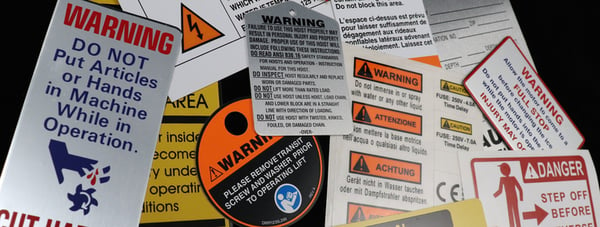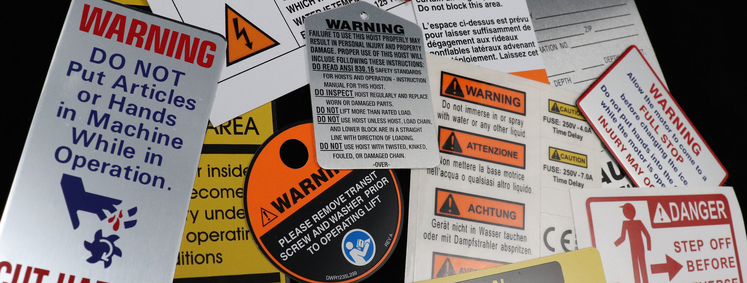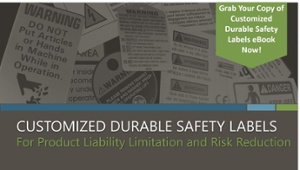Caution and safety labels are subject to industry regulations for symbols, colors and even the specific text that should be used to communicate with the product or equipment user. It is also important to review how those labels will be attached. A fully compliant label with all the right notations, colors, and symbols is only good if it stays in place as intended.

One of the most common attachment solutions for safety labels is a pressure sensitive adhesive. There are many considerations to keep in mind when choosing an adhesive as it is a critical element of the label construction. Exposure to the elements, the type of surface it will stick to as well as any unique specs that the bond needs to meet are just some of these.
Exposure to the Elements
Environmental extremes and stresses will challenge the staying power of your safety label. Will there be exposure to any of these?
-
Sunlight or UV rays
-
Rain or humidity
-
Extreme heat or cold
-
Chemicals or cleaning solvents
-
Oils or grease
-
Vibration or moving parts
-
Interior or exterior application
Equipment that needs a caution or information tag on moving parts or vibrating engines will need a stronger adhesive than a product that simply requires a branded nameplate. Likewise, machinery that is primarily used outdoors like construction or farm equipment will require an adhesive that is resistant to harsh outdoor environments. Indoor applications can have extreme exposures as well, such as medical or food service equipment.
Type of Surface
Another important element to consider is the type of surface your nameplate will be adhered to. Adhesives are commonly known for their ability to stick to metal. However, metal is commonly powder coated or painted so your nameplate will be adhering to the paint and not the metal surface. Most common adhesives do not bond well with these surface coatings but there are special adhesives that are designed to be used specifically for these applications. Additionally, rough and smooth surfaces sometimes make the application area more difficult to adhere to as well.
-
What type of substrate is your nameplate attached to?
-
Smooth or textured mating surface?
-
Curved or flat mating surface?
-
High or low surface energy?
Other Considerations in Choosing an Adhesive
-
How will you be applying the safety label?
-
What are your storage requirements?
-
What specs does the bond need to meet?
Whether you call them warning labels, safety labels, or decals, there are many situations where a self-adhesive option is the best way to ensure your message is seen. Important considerations include what type of surface is it sticking to and what type of environment it will be used in.
How Can We Help?
McLoone offers a diverse selection of material, processes and attachment solutions to effectively communicate important and recognizable symbols and graphics for product-specific warning and safety labels that will last the life of your product.
Related Posts
Can Safety Labels be Customized? Yes!
Custom Industrial Warning and Caution Labels
Multiple Language Warning Labels Supplied as a Kit
Getting Nameplates to Stick to Powder Coated Metal Surfaces
5 Tips for Storing and Applying Nameplates with Pressure Sensitive Adhesive



